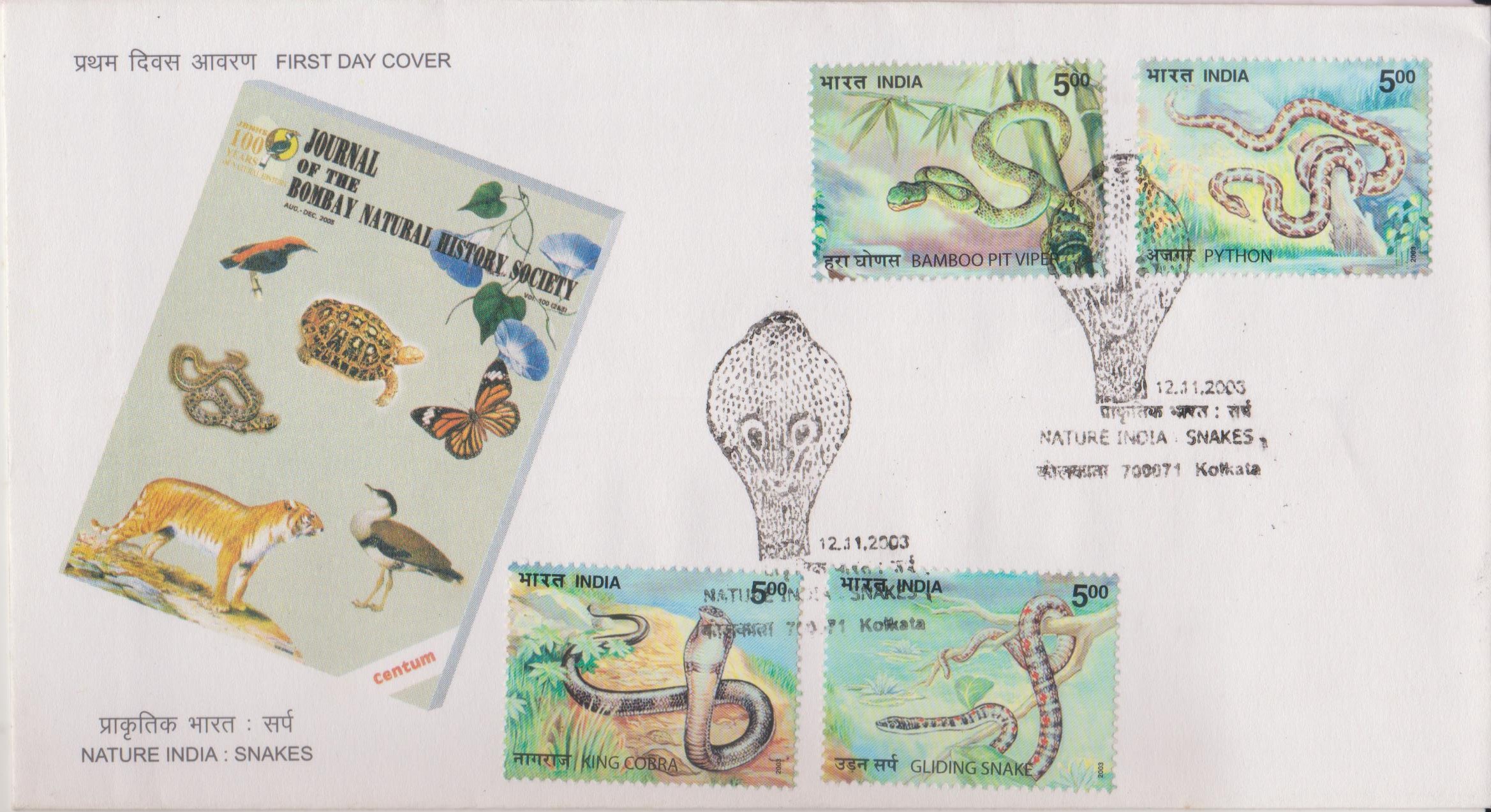
Nature India : Snakes
Complete Set of 4 nos of postage stamp on the Indian Snakes : Indian python, Bamboo pit viper, King cobra and Gliding snake :
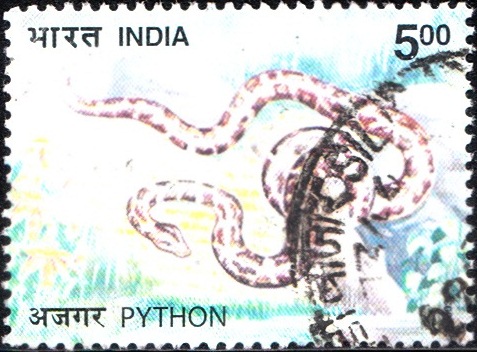
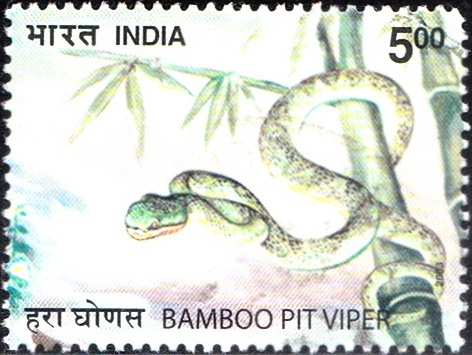
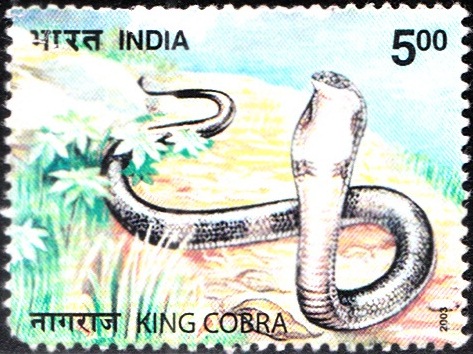
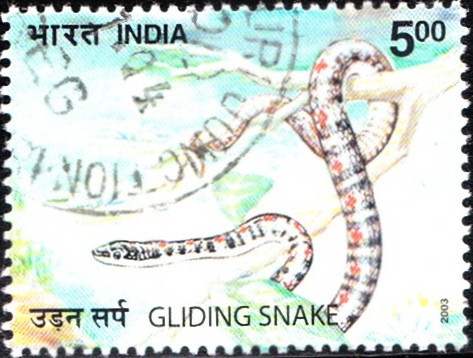 Issued by India
Issued by India
Issued on Nov 12, 2003
Issued for : The Department of Posts draws attention to these beautiful, mysterious and fascinating creatures with this set on snakes in the series celebrating Nature India. Its release coincides with the publication of the 100th volume of the Journal of the Bombay Natural History Society (BNHS). Since its inception in 1886, the journal of the Bombay Natural History Society has recorded the biodiversity and its conservation in the Indian Subcontinent. The first day cover commemorates the publication of the hundredth volume of its Journal and its contribution in helping the conservation of endangered species.
Credits :
Stamp : Sankha Samanta
FDC : Courtesy Bombay Natural History Society
Cancellation : Alka Sharma
Type : Stamps, Postal Used
Colour : Four Colour
Denomination : 500 Paise each
Overall size : 2.9 x 3.91 Cms.
Printing size : 2.9 x 3.91 Cms.
Perforation : 13 x 13
Paper : Imported un w/m Adhesive stamp paper
Print Quantity :
Stamps : 0.8 Million each
Miniature Sheet : 50000
Number of Stamps per sheet : 40
Printing Process : Photo offset
Printer : Madras Security Printers
About :
- Snakes hold a fascination for people across the world, a fascination reflected in epics, myths, art, legends, folklore, religion poetry, music, dance, fiction and now, films. The ethos of India swings from snake charmers to information technology.
- Snakes are members of the Order Squamata of reptiles and 262 species are reported in India of which 56 are venomous. The venom serves them as a means to capture prey, a self defence mechanism and a digestive aid. Not all snake bites are fatal. Often the fright and shock alone kill the victim.
- The Python (Python molurus) is one of the largest and most widely distributed non-venomous snakes in India. Normally a jungle dweller, it occurs in dense as well as open forests, with rocky areas. The Python is a good climber, often hiding among branches of trees and is also an excellent swimmer. It feeds on mammals, birds and reptiles, but seems to prefer mammals. Killed in large numbers for its skin, the Python is an endangered species included in Schedule-1 of the Indian Wildlife (Protection) Act, 1972.
- The bright green Bamboo Pit–Viper (Trimeresurus gramineus) is one of the tree dwelling, hill species in the Western Ghats and not seen below 450m. It is found in low vegetation, with a marked preference for bamboo in localities where it occurs. Grass green above and glossy white, yellow or greenish below, its colours provide a camouflage on trees, its prime habitat. It feeds mainly on small mammals and birds. Though its venom is not very toxic, it causes pain and swelling of the bitten part, nausea, vomiting and fever. The snake gives birth to 7-15 young ones at a time.
- The King Cobra or Hamadryad (Ophiophagus hannah) is the largest species of venomous snake in the world. Though not common in India, it is found in and around dense jungles of hills in peninsular India. It has earned for itself an unenviable reputation for an aggressiveness and courage probably unique among the Indian species. Like the Cobra, it erects its head and body to about one-third its length and spreads its hood. The staple diet of this species is snakes. The female builds a nest of leaves and sand, hooking the leaves with a loop of her body and piling them up. She lays eggs in this nest, covers them with the litter and coils on top of the leaf-covered clutch.
- The Gliding Snake (Chrysopelea Ornata) is a handsome tree dweller who frequently descends to the grass and low bushes. A graceful and agile climber, it moves from branch to branch or up a perpendicular tree trunk with consummate ease. Several instances of its ability to spring horizontally and upwards, and to glide from a height to the ground to another tree are recorded. In gliding, it launches itself straight, becomes rigid and hollows its belly, buoying its body and retarding the speed of descent. The distance covered in one gliding action is recorded as 50 m.
- Text : Courtesy Bombay Natural History Society.


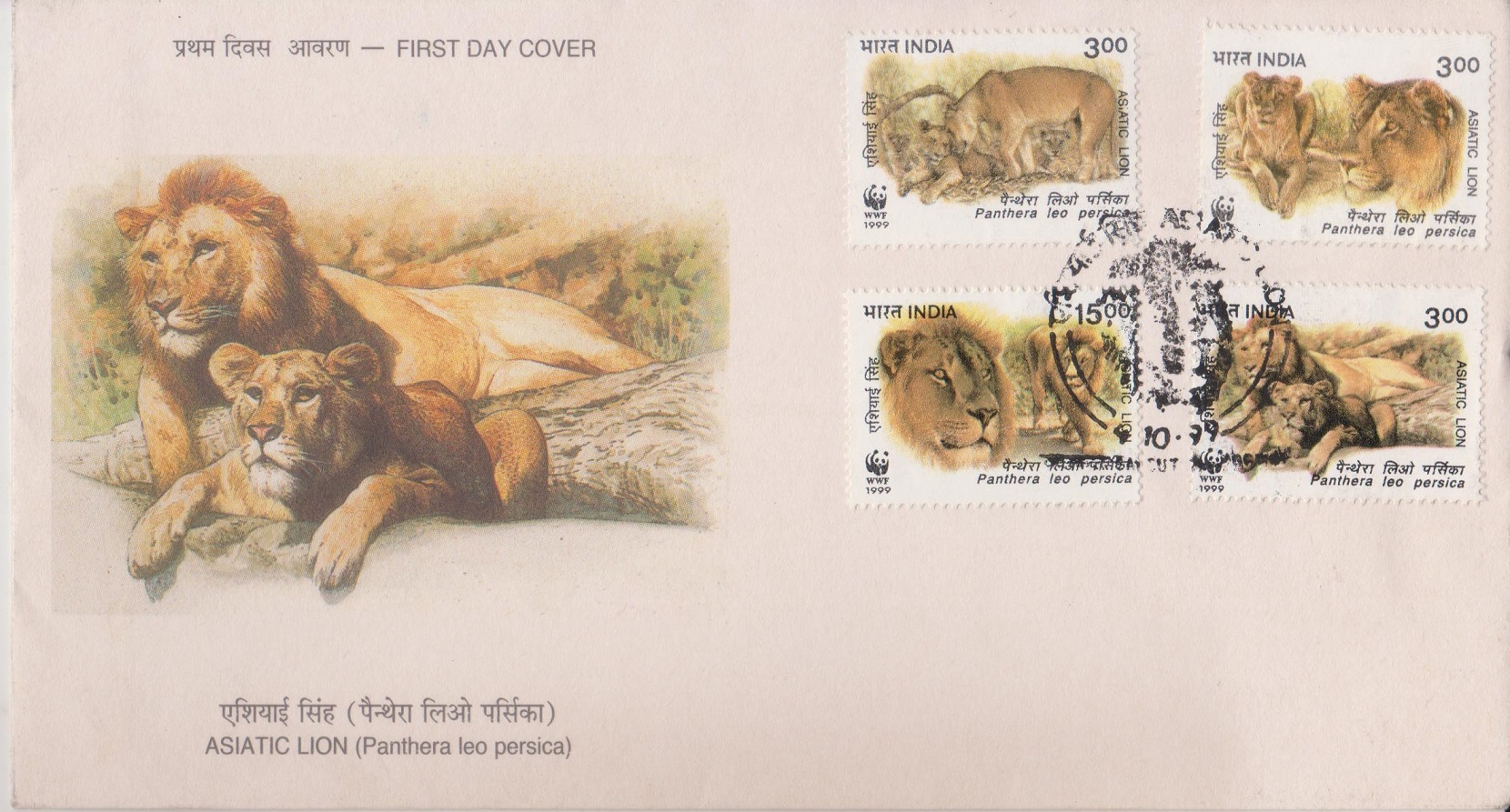

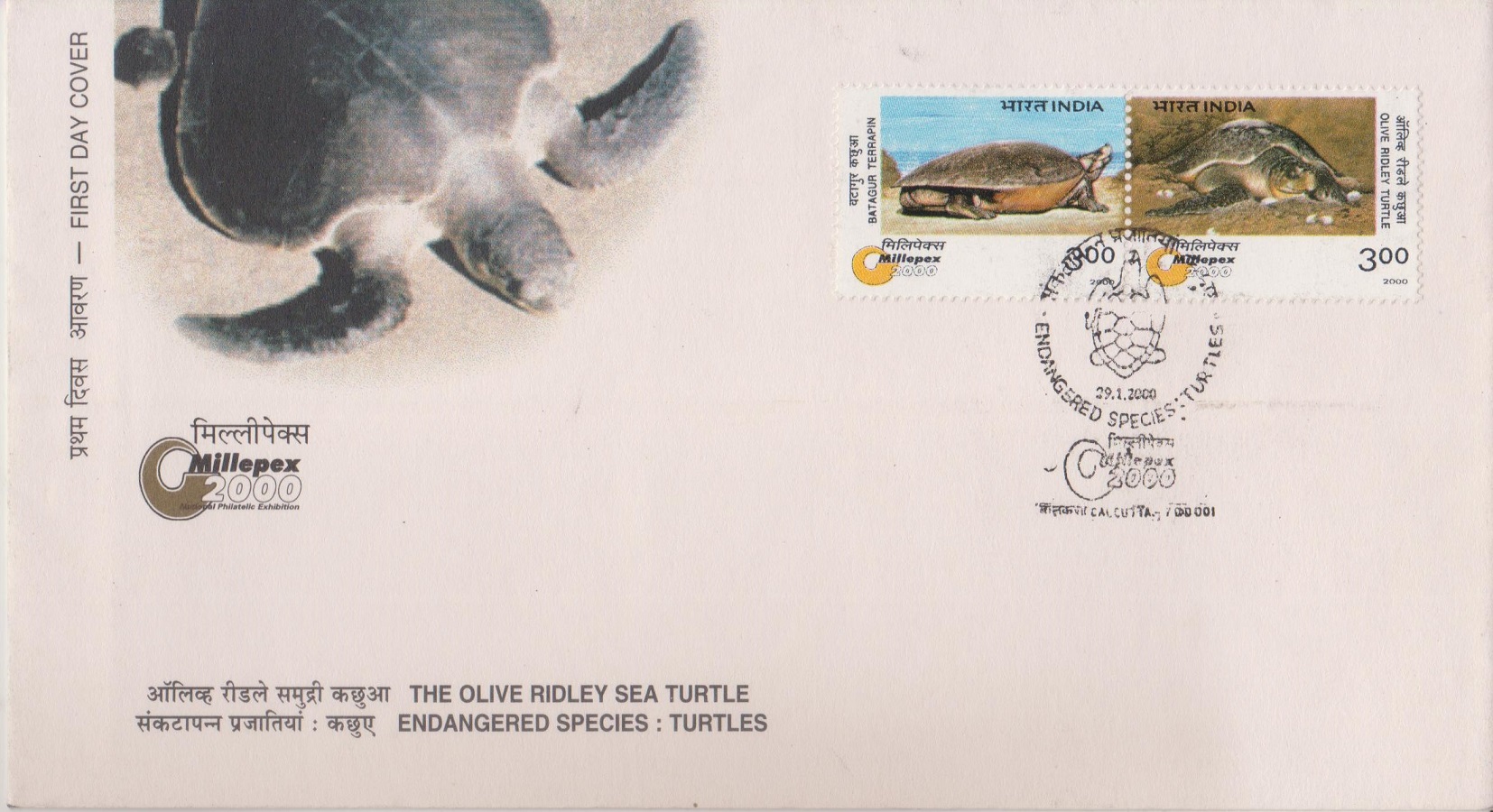
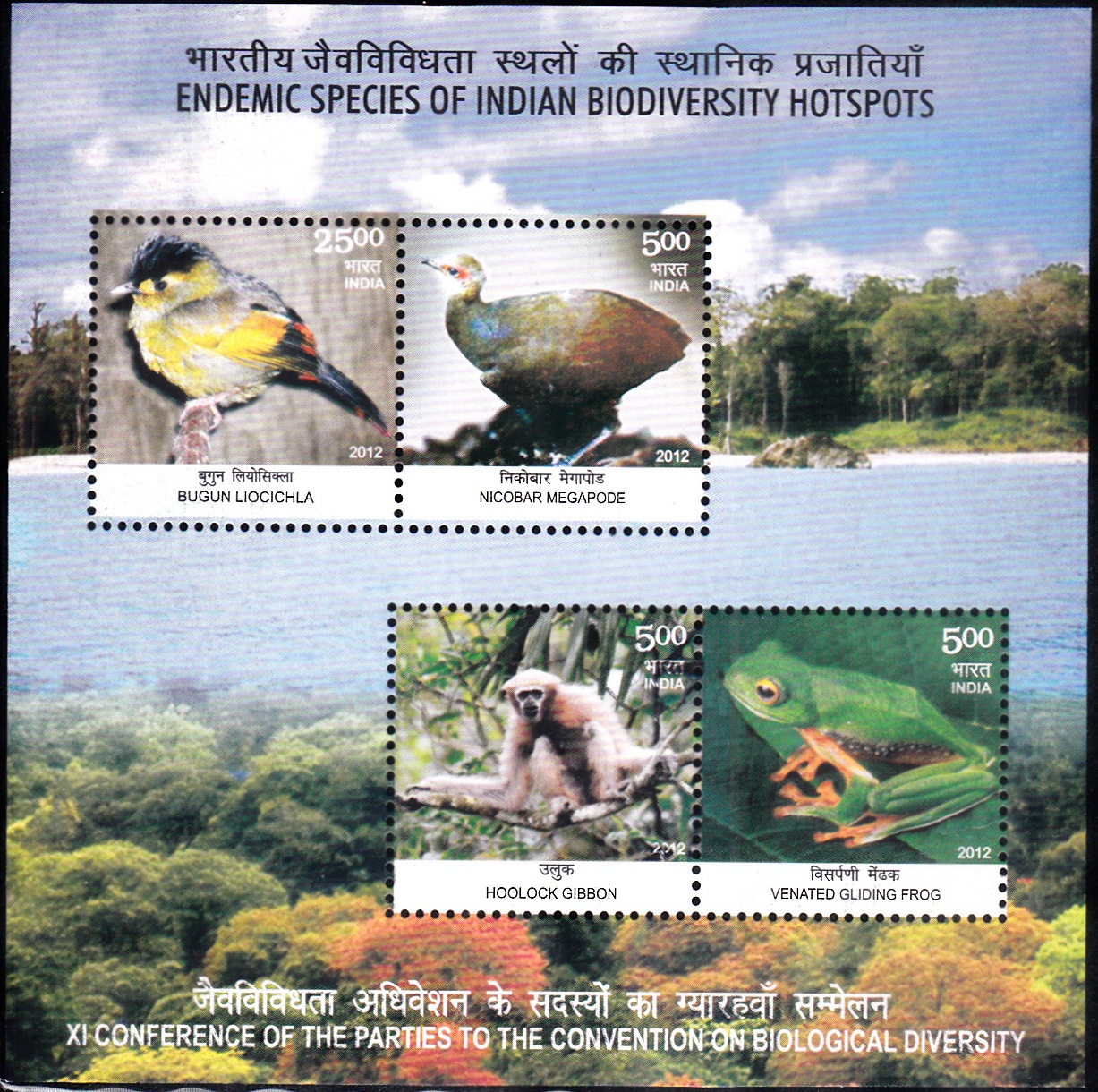
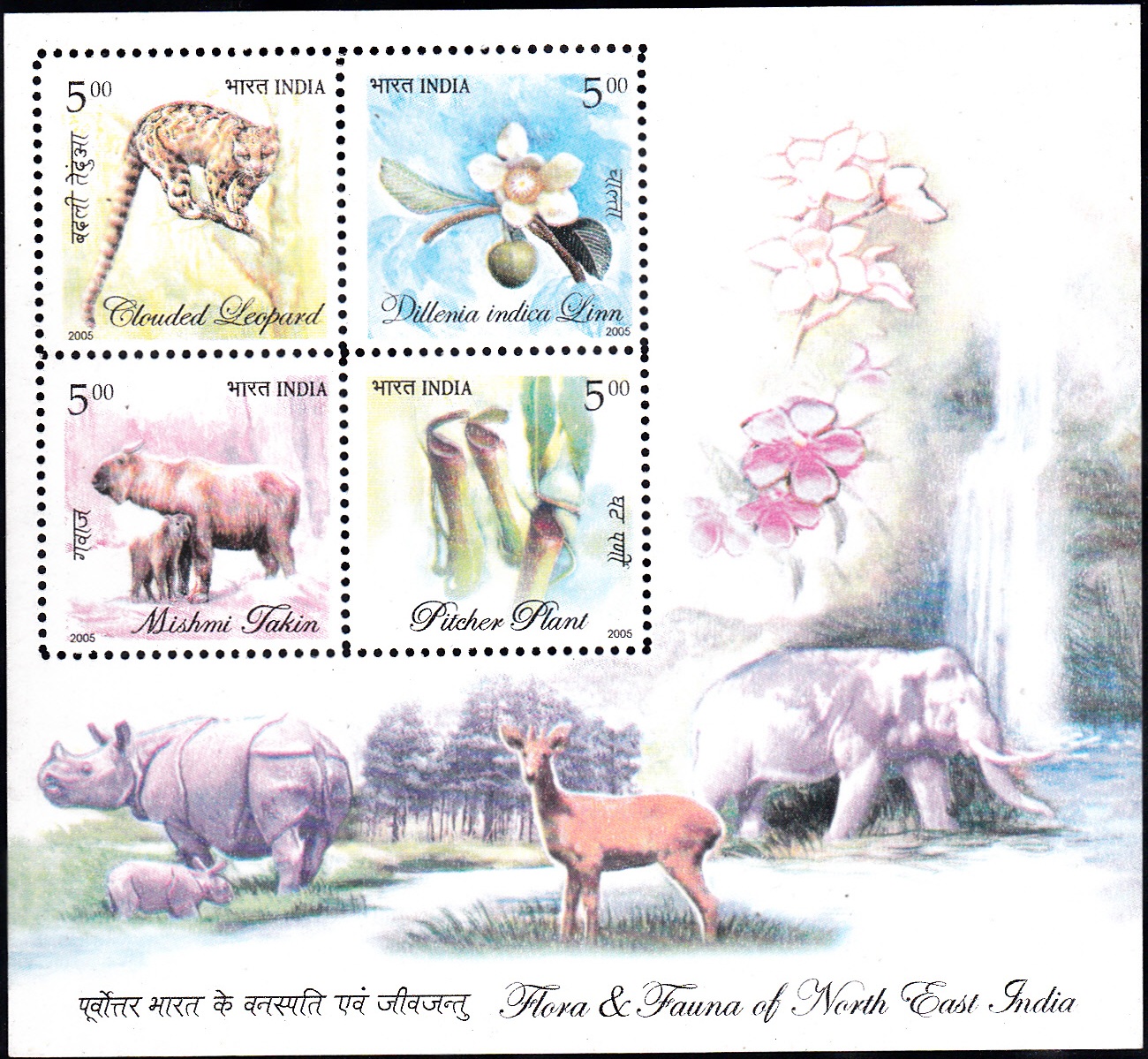

[…] has it that in the Treta Yuga a king named Nigas was cursed by a rishi and had to take the shape of python and lived here. The place was visited by the great Pandavas during their exile and the accursed […]